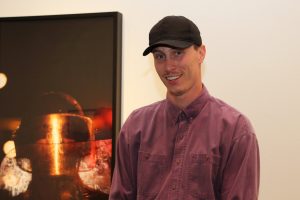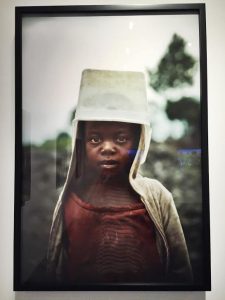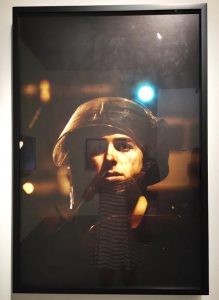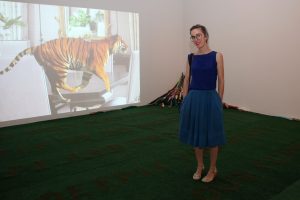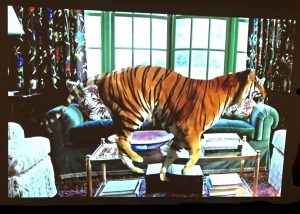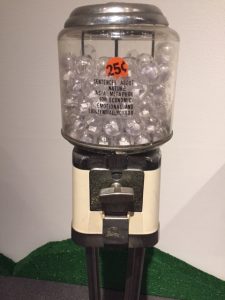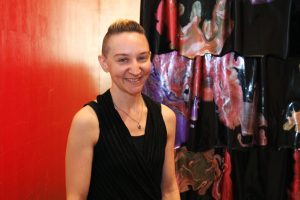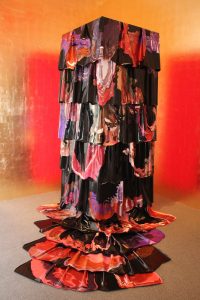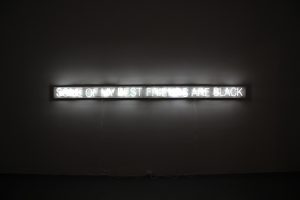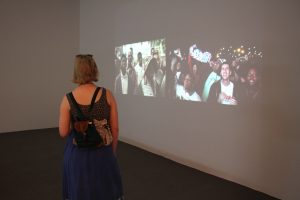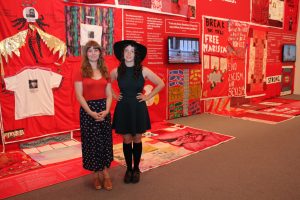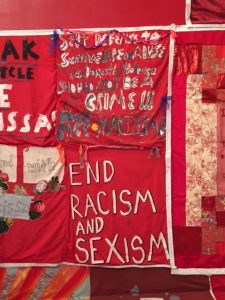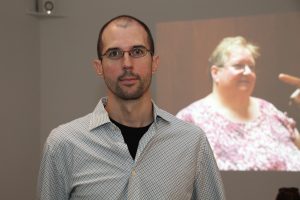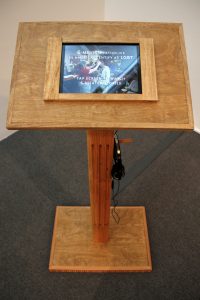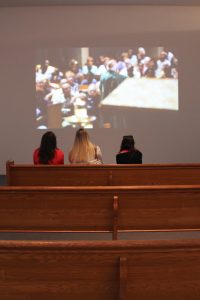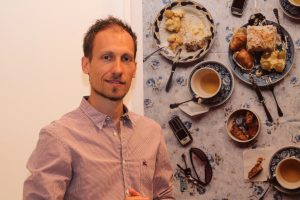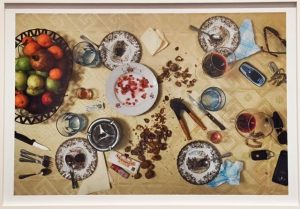This morning, Tuesday June 21st, The Baltimore Museum of Art, in partnership with the Baltimore Office of Promotion & The Arts, closed the Museum for a press preview of the Janet & Walter Sondheim Artscape Prize finalists exhibition, before it opens to the public on Wednesday, June 22 – Sunday July 31st.
The exhibition showcases the seven finalists in the running for the ultimate Sondheim Artscape prize of a $25,000 fellowship, which is awarded to one Baltimore artist each year.
The seven finalist each presented a diverse, exciting, and extremely thought provoking gallery of their personal work. addressing important themes such as race, sexual assault, religion, and LGBTQ issues.
2016 finalists:
Theo Anthony
Filmmaker and photographer Theo Anthony has explored poignant themes and, at times, political subjects in locations that range from his Baltimore home to Africa. The video Peace in the Absence of War (Baltimore, MD) considers responses by citizens, law enforcement, and national media to the death of Freddie Gray and the subsequent Baltimore uprising of April 2015. Anthony addresses this topic further in a series of photographic portraits of helmeted police officers.
Imagery of men and boys in helmets continues in photographs of football players and a child living on the streets of Masisi, a city in the conflict-ridden Eastern Democratic Republic of Congo. Cultural rites associated with masculinity are further explored in works about bodybuilding and car shows.
Stephanie Barber
Based in Baltimore, Stephanie Barber is a multi-media artist who works most frequently with film, video, and the written word. She explores the narrative and conceptual dimensions of language, as well as its visual qualities; these are exemplified in the Lawn Poem on view.
Barber has created an installation which considers the historical, philosophical, and spiritual ways humans grapple with the concept of “nature.” Encapsulated in the idea of nature are divisions and hierarchies between the domesticated and wild that might also be applied to power dynamics in human relationships. Barber states: “a desire to clearly communicate complex ideas, through humor, inquiry, pathos, and unexpected juxtapositions is at the core of much of my writing and film work.”
Visitors are invited to peer through viewfinders or place a quarter in a vending machine to purchase an idea.
Darcie Book
Darcie Book’s work blurs boundaries between painting and sculpture. Rather than a series of brushstrokes, her wallbased work includes passages of poured, folded, and draped paint that have a strong three-dimensional quality. Although these carefully built-up layers of paint are already dry, they still convey the oozing, tactile qualities that artists experience when they squeeze paint from tubes onto their palettes. In other words, Book’s works emphasize the sensation of paint as an inviting material in itself rather than a component of a flat image.
The Baltimore-based artist also creates installations, painstakingly applying gold leaf to walls and then positioning columns enrobed in colors nearby. The vivid surfaces of the columns are reflected in the gold leaf, producing the effect of a painting executed in space rather than on a single plane.
Larry Cook
Larry Cook, a conceptual artist living in Landover, MD, alters pre-existing text, images, audio, and video in order to illustrate the evolution of racism in America. Using a variety of devices, he captures the attention of visitors and prompts them, whatever their ethnicity, to confront their personal racial biases and the circumstances of contemporary black Americans.
Cook’s video Stockholm Syndrome juxtaposes film footage from several sources. Images of slaves, taken from the TV series Roots (1970) and the movie Twelve Years a Slave (2013) are seen alongside footage of the diverse crowd attending Barack Obama’s 2008 acceptance speech upon his election as the country’s first black president—an event that led to the premature declaration of a post-racial America. The work takes its name from psychological phenomena that cause kidnapping victims to develop empathy for their captors, sometimes even defending them. Some of My Best Friends are Black, realized in white neon, takes issue with the frequently heard defense against the charge of racism or white privilege, and encourages us to reflect on the possibility that despite our best intentions, the subconscious may not be immune to the racial biases perpetuated by the media.
FORCE: Upsetting Rape Culture (Co-founded by Hannah Brancato and Rebecca Nagle)
FORCE: Upsetting Rape Culture describes itself as a “creative activist effort to upset the culture of rape and promote a culture of consent.” The organization was founded in 2010 by Hannah Brancato and Rebecca Nagle, community organizers and artists living in Baltimore. The group deploys its messages against sexual violence through public art projects and events, as well as through the Internet and media campaigns. On view is a small portion of FORCE’s The Monument Quilt, a growing compilation of the stories of survivors of sexual violence presented on 8-foot by 8-foot squares of red fabric. In 2017, FORCE seeks to bring 6,000 of these quilt squares (produced in workshops across the country) to the National Mall in Washington, D.C., where they will spell out the equally cautionary and consoling phrase “Not Alone.” Accompanying the quilt squares at the BMA is video footage documenting earlier presentations of the quilt. FORCE will also conduct a public awareness program as part of its Sondheim exhibition contribution.
Eric Kruszewski
Eric Kruszewski, a photographer and filmmaker based in Washington, D.C., has undertaken an in-depth exploration of the pioneering LEAD ministry initiated by Saint Matthew Catholic Church in Baltimore. LEAD (LGBT Educating and Affirming Diversity) supports the Lesbian, Gay, Bisexual, and Transgender members of its parish and the broader community. In addition to documenting the work of LEAD’s director, Father Joseph Muth Jr., Kruszewski conducted interviews with a variety of members of the Saint Matthew Community to reveal the varied backgrounds that have led to their participation in LEAD.
Kruszewski presents his footage as a video altarpiece, surrounded by reclaimed pews. The stories of the individuals involved in LEAD are further detailed in videos presented on digital tablets within the church-like installation. The filmmaker has observed that “LEAD offers a safe place for the diverse LGBT community to congregate, share, and find comfort amidst a larger church environment that does not fully accept them.”
Christos Palios
Christos Palios, a first-generation Greek-American living in Baltimore, photographs both the United States and the country of his ancestors. As long as he can remember, Palios has made regular trips to Greece to spend time with family. While the international media often focuses on the country’s economic and refugee crises, the artist offers layered perspectives on contemporary Greek society.
The concrete structures that appear in Un-Finished // Contemporary Ruins are abandoned construction projects that punctuate today’s Greek landscape. Arranged in a grid, the images call to mind the work of Bernd and Hilla Becher, 20th-century photographers renowned for their dispassionate depiction of water towers, grain elevators, and other industrial buildings. Framed against the grey sky, the skeletal structures of Palios’ work are emblematic of Greece’s financial troubles. At the same time, they evoke the celebrated temples of Greek antiquity.
In his still life series Conversations, Palios photographs tabletops at the close of a meal. The remnants are evidence of the time-honored tradition of gathering with family and friends for nutritional and social sustenance. The inclusion of cell phones and smart phones adds a contemporary time-stamp to the still lifes, calling to mind the benefits of global connectivity, as well as the stresses and distractions of 21st-century living.

